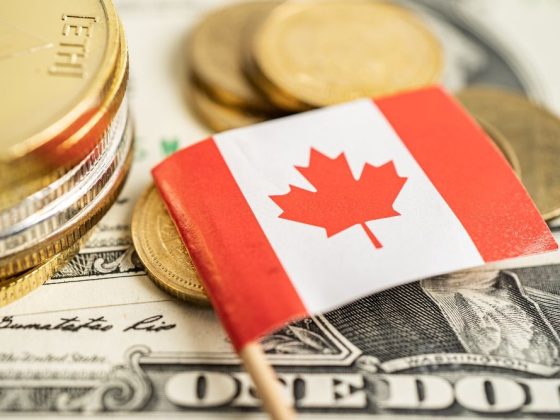Just two years ago, Pakistan was on the brink of economic collapse. Inflation soared to 38%, foreign reserves dwindled to cover just two weeks of essential imports, and GDP growth stagnated at 0.2%.
The country narrowly avoided default with a $7 billion IMF bailout that came with stringent conditions, including tax reforms and subsidy cuts.
Now, in a remarkable turnaround, Pakistan has not only stabilized its economy but is charting a course for sustainable growth through bold reforms and ambitious partnerships.
What can other developing nations learn from Pakistan’s transformation?
How did Pakistan manage to recover?
In 2024, Pakistan launched “Uraan Pakistan,” an ambitious economic transformation plan.
The initiative aimed for export-led growth of 6% GDP by 2028, focusing on sectors like agriculture, energy, IT, textiles, and pharmaceuticals.
Furthermore, the government took some measures to stabilize the nation’s economy.
Tightening fiscal policies, curbing inflation through monetary interventions, and modernizing tax collection were the most effective ones.
The results were immediate.
By early 2025, inflation had dropped to 4.1%, foreign exchange reserves had improved to cover over two months of imports, and goods exports grew by 7.1%.
The IT sector became a standout performer, expanding by 28% year-on-year.
Foreign direct investment (FDI) also surged by 20% in the first half of the fiscal year, indicating renewed confidence in Pakistan’s economic prospects.
The reform-oriented budget introduced in mid-2024 further strengthened recovery efforts.
By targeting under-taxed sectors like agriculture, real estate, and trade, Pakistan aimed to raise Rs13 trillion in revenue, a 40% increase from the previous year.
Modernizing the Federal Board of Revenue (FBR) played a crucial role in streamlining tax administration and enhancing compliance.
A $20 billion partnership with the World Bank
Pakistan’s recovery efforts received a significant boost through a $20 billion, ten-year funding package from the World Bank.
This “Country Partnership Framework” (CPF), the largest in Pakistan’s history, will target critical areas for sustainable development.
The main focus areas will be improving education, expanding access to clean energy, addressing child malnutrition, and building climate resilience.
The World Bank’s focus is not just on funding but also on attracting private investment.
By prioritizing sectors such as energy, digital infrastructure, and agriculture, the initiative seeks to stimulate long-term economic growth.
This aligns with Pakistan’s goal of creating a resilient, self-reliant economy.
The government’s collaboration with the World Bank also integrates sustainability into its broader development framework.
This effort contributes to global goals, such as the United Nations Sustainable Development Goals (SDGs), while addressing pressing local challenges like poverty alleviation and clean energy adoption.
Potential risks remaining
Despite its progress, Pakistan’s path to economic recovery is far from smooth.
Structural inefficiencies in tax collection remain a significant issue.
The country’s tax-to-GDP ratio lags behind other developing nations, and external debt servicing consumes nearly half of annual revenues.
Reforms to state-owned enterprises (SOEs) have been slow, and the energy sector continues to drain public resources.
Political instability is another persistent challenge. Large-scale protests, particularly following the arrest of former Prime Minister Imran Khan, have created uncertainty for investors.
This instability has historically hampered Pakistan’s ability to attract long-term foreign capital.
Moreover, while the government has taken steps to modernize its economy, not everyone is convinced yet.
The World Bank has warned that Pakistan’s inconsistent track record on reforms could delay the realization of new investments.
Building trust and demonstrating sustained progress will be key to overcoming these challenges.
Why Pakistan could be an emerging investment opportunity
Despite the obstacles, Pakistan is emerging as a promising destination for investment.
The country’s focus on renewable energy, IT, and export-driven industries positions it as a competitive player in South Asia.
The success of initiatives like the Roshan Digital Account, which attracted $9 billion in inflows, highlights the growing confidence of overseas Pakistanis in the country’s financial systems.
Special Economic Zones (SEZs) under the China-Pakistan Economic Corridor (CPEC) offer unique opportunities for businesses.
These zones, combined with public-private partnerships, have already drawn interest from global firms like Samsung, Aramco, and BYD. Pakistan’s improving sovereign credit ratings—upgraded by all three major agencies in 2024—further enhance its appeal.
Pakistan’s IT sector, which grew by 28% in 2024, is ripe for venture capital and tech innovation.
The agricultural sector, historically underutilized, could benefit from modernization and technology-driven efficiency.
Renewable energy, supported by World Bank funding, presents opportunities as Pakistan transitions to a cleaner energy future.
The country’s youthful workforce and abundant natural resources add to its potential. With over 60% of the population under 30, Pakistan has a demographic edge that few countries can match.
What’s next for the nation
Pakistan’s recovery offers valuable lessons for other developing nations. It shows that even in the face of near collapse, bold reforms and strategic partnerships can pave the way for economic revival.
However, sustaining this momentum will require consistent policies, political stability, and a commitment to addressing structural challenges.
As Pakistan takes its next steps, the focus will likely be on ensuring long-term resilience.
Whether through attracting foreign investment, modernizing its economy, or addressing climate challenges, the country is positioning itself as an emerging hub for innovation and growth in South Asia.
The coming years will determine whether this transformation is a fleeting success or a sustained breakthrough.
The post What can we learn from Pakistan’s impressive economic recovery? appeared first on Invezz


